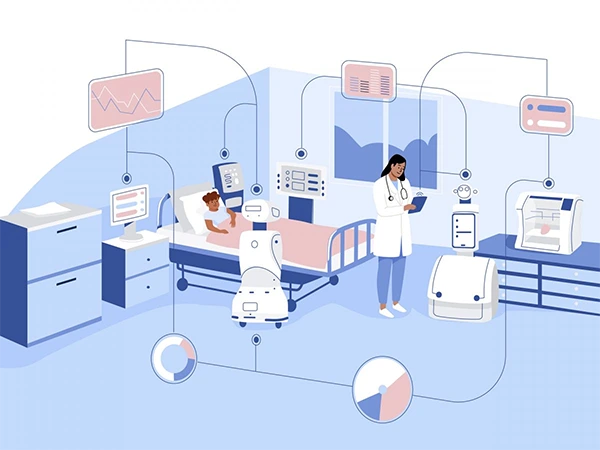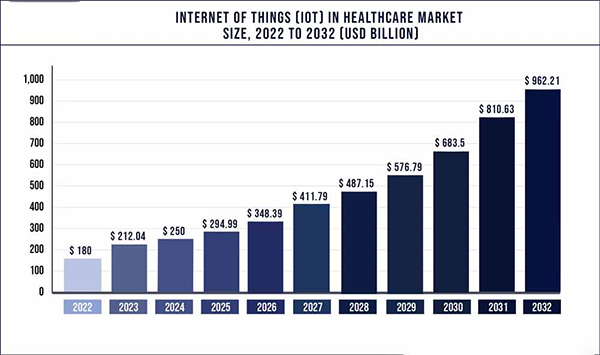Convenience is the name of the game today in 2024. You know, it’s pretty easy to automate almost anything you can imagine, and this is all thanks to the Internet.
From turning your lights on and off to adjusting the thermostat automatically, all this is possible thanks to the internet too.
These smart devices that use the Internet for their operation have been coined as “Internet of Things” or IoT for short, which forms a network among all devices that are connected to the Internet.
And IoT is not just limited to your houses you know, you can find applications of IoT in the field of healthcare as well. But it comes with its own limitations.
If you want to keep your devices connected, you need an active internet connection, for that, you get a reliable connection from Xfinity Internet.
In this blog post, we’ll be talking about how you can use the Internet of Things in the healthcare industry through devices and how it can help in making sure of your well-being.
Make sure that you read all the way to the end, so without any further ado let’s get into it! Also, learn about How Fraud Analytics Helps “Catch” Healthcare Perpetrators by reading this article.

So, what use do patients and healthcare professionals really have with IoT devices?
Well, it’s pretty handy for one, patients can keep track of their health or monitor their vitals in case they’ve been diagnosed with something.
The most common form of IoT devices that patients use are wearables such as smartwatches and fitness trackers.
These devices come with sensors that monitor all the activity going on in your body such as blood oxygen levels, blood pressure, and even your heart rate.
DID YOU KNOW?
Hospitals are the largest end-users of healthcare IoT solutions, as they have a wide range of applications in hospital management, patient monitoring, and asset tracking.
Since these devices are connected to the internet, they keep a log of all the updates in your health online so that the data can be shared with your doctor.
Some common IoT devices that patients use include:
You know, many people wear smartwatches these days but most do not understand the hidden healthcare potential of these wrist-sized devices.
These watches include some popular ones such as the Apple Watch, Samsung’s Galaxy Watch, Google’s Pixel Watch, and the OnePlus Watch.
Most of them come integrated with health features such as heart rate sensors, blood oxygen level monitors, and a lot more. Not only that, they are a good fashion statement as well!
If you’re not that into smartwatches, you could also go for something that is a bit lighter.
So, what’s the alternative then?
Well, you might have guessed it, but the next best thing you can use to monitor your health is a fitness band. It is cheaper and it still has all the important sensors you’ll need for health tracking too.
One of the best fitness trackers that you could get is any fitness band by Fitbit.
Fitbit efficiently tracks your heart rate, can help you relax through breathing exercises, tracks your sleep, and even aids you as you are working out through various exercise modes.

The Internet of Things is undeniably one of the most useful things in every industry out there, which also goes for the healthcare industry as well.
One of the main benefits of opting for the Internet of Things in the healthcare industry is a simultaneous process of reporting and monitoring.
For example, if a person is wearing a heart rate sensor, they would be tracking their heart rate in real-time. The results would allow the patient to keep up to speed with the function of their heart and give them an idea about their heart health.
Some smartwatches also come with crash detection or fall detection, like the Apple Watch which will automatically detect any signs of impact.
Once it senses that you have been in a crash or if you are elderly and have fallen down, the watch is able to contact first responders and emergency services automatically.
The IoT devices also help in effective tracking and alerts not just for the benefit of the patient, but also to make things a lot easier for the physician or doctor as well.
Since the trackers are always monitored in real-time, in case something goes wrong with the patient, the doctor would immediately be alerted, which would aid them in saving a life.

The global Internet of Things (IoT) in healthcare market size was valued at USD 180 billion in 2022 and it is expected to reach around USD 962.21 billion by 2032 with a compound annual growth rate (CAGR) of 18.3% during the forecast period 2023 to 2032.
You can easily see just how important Internet of Things devices are for the whole healthcare industry.
You can wear a smartwatch or a fitness tracker that would allow you to not just stay healthy but also get help as soon as you need it in case something happens to you.
The Internet of Things has not only made things easier for us in our homes but it has literally been proved to be a lifesaver!

Thanks for choosing to leave a comment. Please keep in mind that all comments are moderated according to our comment Policy.